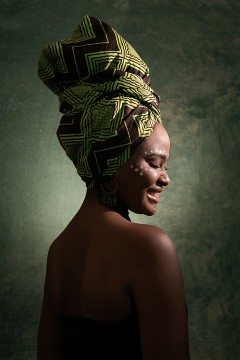
The Danger of a Single Story is a speech given by Adichie at a TED Talk. Adichie is a prolific Nigerian writer, and in this speech, she addresses the topic of singular narratives and how detrimental they can be to one’s worldview. An important element of Adichie’s speech is the simplicity of her language. She does not use extensive, difficult vocabulary- instead, she uses anecdotes and her personal experience. The Danger of a Single Story is simple and easy to understand, yet the impact is huge because of the powerful and relatable delivery. The main themes of her speech are stereotypes and the incompleteness of one-sided portrayals.
The Danger of a Single Story | Summary
Adichie opens her speech with a brief introduction- she is a storyteller who is looking forward to telling the audience a few anecdotes in relation to the title: The Danger of a Single Story. With an administrator mother and a professor father, Adichie grew up on a University campus in Eastern Nigeria. She was an early reader and writer. At seven, she would use pencil and crayons to write stories and show her mother, all of which had blond, blue-eyed characters. After all, she was only used to reading books by foreign authors, hence this was all she knew- very different from her life in Nigeria. This shows how impressionable a story can be.
Once Adichie discovered African books (though there were not many at the time) she finally read about characters who were similar to her in appearance and lifestyle. Though she loved the American and British books she read, as it was like a different world, reading African stories reminded her that there are many different perspectives to life- there is no single story. Adichie herself came from a comfortable, middle-class family who had in-house help. When she was eight, their houseboy’s name was Fide. He was extremely poor, and Adichie felt pity for them. However, once when her family went to visit Fide’s, Fide’s mother showed them a basket Fide’s brother had made. Adichie was shocked that they could make something, for all this time she had only associated them with pity and poverty. She realized then that she had fixed a single story for them.
When Adichie was 19, she went to the USA for university. There, her roommate was surprised at her fluent English and Mariah Carey tapes. The roommate felt sorry for Adichie before even meeting her because her imagination of Africa was the same as how Adichie used to view Fide- poor. The roommate could not fathom an African being similar to her, and that was her single story of Adichie. Adichie never considered herself ‘African’ until moving to America, where it became immediately associated with her. She accepted the identity proudly but noticed many people having a single story of Africa. For example, her professor thought her writing was not authentically African because it contained middle-class characters driving cars, rather than poor, starving people as he expected.
Adichie talks about how she had a happy childhood. Unlike several writers who had struggled before rising to success, she was from a close-knit family full of love. However, her family did experience difficulties- such as grandparents who died in a refugee camp, a cousin who died from lack of adequate healthcare and a friend who died in a plane crash because there was not enough water in the fire truck- she maintains. She also mentioned that their government devalued education, so her academician parents did not always get their salary. But she says those incidents contribute to her identity today.
At the same time, Adichie says she will not insist that it is those negative stories that make her who she is. And that is because it then overlooks all the other incidents and happier stories that also contributed to her present self. Having just one single narrative creates stereotypes- “and the problem with stereotypes is not that they are untrue but incomplete.” Adichie does not want one of her stories to become the only story, because there are many perspectives, incidents and narratives which all together form the person she is today.
The Danger of a Single Story | Analysis
Adichie begins her speech by saying that she grew up on a university campus, and started to read and write early. The mention of an academic surrounding alludes to a steady background. Throughout the speech, Adichie subtly and chronologically separates her life into various incidents where she found herself experiencing the danger of a single story- whether it was on her part, or she was on the receiving end. When Adichie repeatedly refers to ‘single story, what she means is having a single narrative that often turns into a stereotype. It is to know only one thing about a person or place and proceed to associate them with only that, being unable to look beyond it. In doing so, one fails to see all the other aspects. Not only are they trapped within narrow boundaries of their incomplete beliefs- they trap the person or place within the same boundaries, as well.
She first talks about how she grew up reading American and British books as they were more readily available, and it influenced her own childhood writing. This highlights the heavy impact of entertainment and media culture on children’s imagination and behavior. Adichie was used to reading about blond characters who ate apples, hence that is what she wrote about. At that time, that was her ‘single story’ of literature. As a seven-year-old reading foreign authors, Adichie believed those were the only types of stories to exist. When Adichie first discovered African writers, she read about characters like her.
She credits both American and British books as well as African ones for how they have built up her mindset. Foreign books broadened her imagination- she could read about a world so different from her own, and understand the lives of people in a different country. However, it was African books that saved her from the danger of a single story: it showed her that there are many angles to literature, and not all characters had to be blond and blue-eyes and eat apples. This is a direct highlight of the importance of multiple narratives. Adichie did not have to read books by writers from every country in the world- she simply had to gain the knowledge that multiple narratives did exist, and this was enough for her to break the barrier of the single-story in terms of literature.
The second time she found herself viewing someone through a single story was the incident with her house-boy, Fide. It is interesting to note that here, once again, her perspective was formed by the information she was given. At seven, she only had access to foreign authors before reading her first African book, hence her view was shaped by that. Here, she only saw Fide in her house cleaning and was always reminded by her mother whenever she wasted food that she should be grateful, for Fide’s family struggles for food and money. Hence, the image she had was the one presented in front of her. Her perspective of Fide and his family- and in a sense, of poverty in general- is changed drastically when she gets to witness his life and village first-hand. When she is able to see the other aspects of Fide’s life with her own eyes, she is able to make her own judgement. That is when she realizes that she had given Fide a single story.
The third situation that stood out to her was when she was on the receiving end of the single narrative, as opposed to the previous two anecdotes. Now, she is the subject of the stereotype. This is a cleverly placed contrast- we as listeners and readers are able to see both sides of the situation. The ignorance and realization which comes from being on the assuming end, and the incredulity and slight frustration that comes from being on the receiving end. Adichie’s roommate views her through a very media-influenced lens- to the point where she doesn’t realize that Nigeria’s main language is English. Similarly, her Professor says her work is not “authentically African.” This is very strange in itself, as he is telling someone from Africa what is supposedly authentic in her own continent- when in reality, she is likely far more aware. This once again sheds light on “how impressionable and vulnerable we are in the face of a story.”
Finally, she addresses herself in the present, as a writer. Though she talks about some difficult experiences she and her family had, she makes it clear that she had a fun-filled, happy childhood with a loving family. Here, she is actively what she has learnt from experience- the delivery of more than one narrative. She does not let her struggles define her identity, for that would not be accurate. Her happy moments contribute to her present self just as much as her difficult moments. This is why she says:
“The single story creates stereotypes, and the problem with stereotypes is not that they are untrue, but that they are incomplete. They make one story become the only story.”
She does not insist the single stories are wrong, but that they are incomplete. There is more to a person, a story, a place than just a single narrative. By acknowledging that fact, the mind is opened to so many possibilities. And most importantly, people are not stereotyped into boxes- things are seen as they truly are, each and every aspect.
About Chimamanda Ngozi Adichie
Born in 1977 in Nigeria, Chimamanda Adichie is a fiction and non-fiction writer who is known for incorporating elements of her own African culture. A proponent of feminism and women empowerment, Adichie has won several prestigious awards, including the MacArthur Fellowship in 2008.

